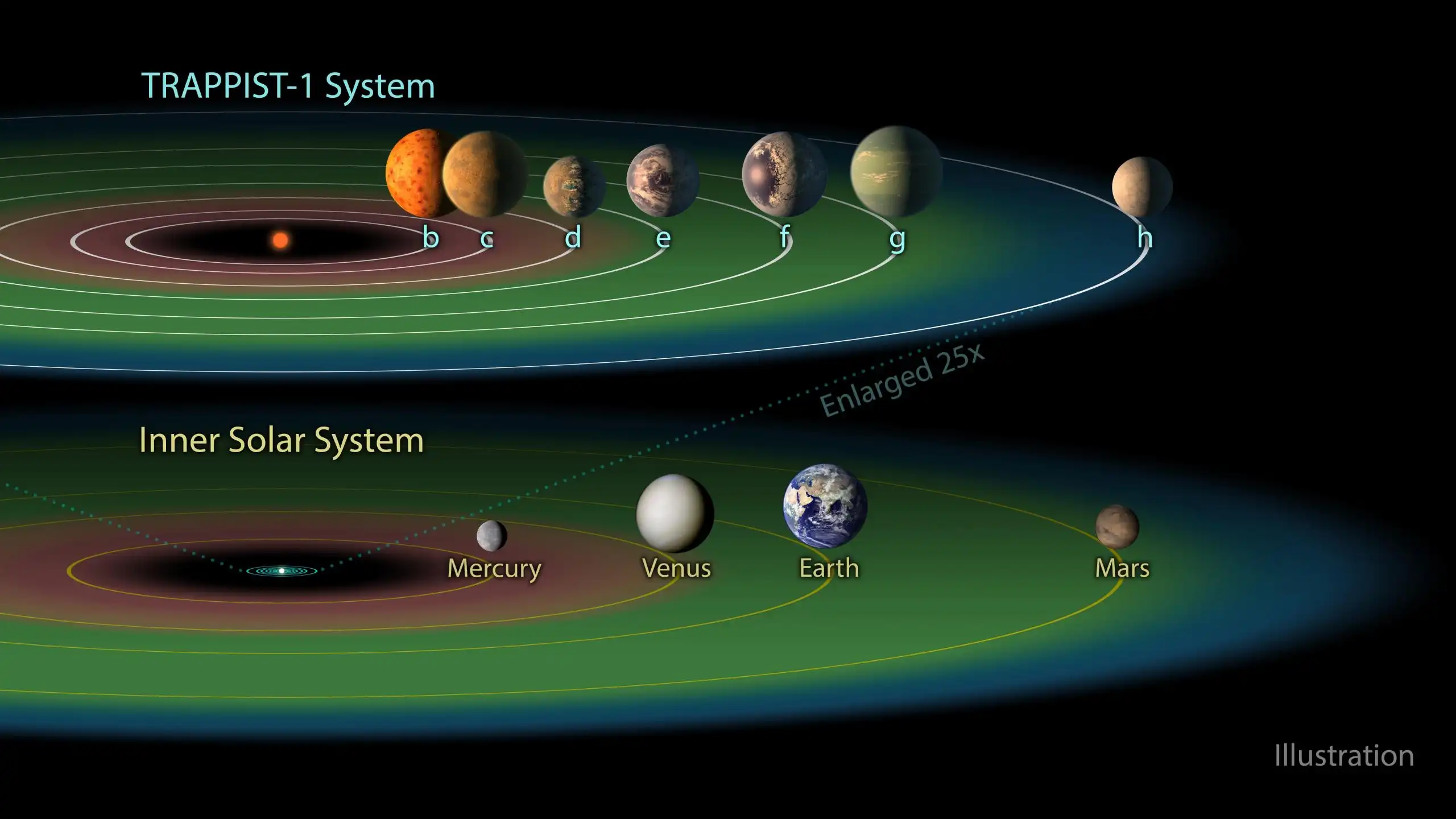If you are going to look for intelligent life beyond Earth, there are few better candidates than the TRAPPIST-1 star system.
The study began with a few assumptions. The biggest one was to presume that if TRAPPIST-1 has an intelligent civilization it is likely spread across more than one world. Given how compact the system is, that isn’t too outlandish. Getting from one world to another wouldn’t be much more difficult than it is for us to get to the Moon. With that assumption, the team then assumed that the worlds would transmit radio messages between each other. Since the signals would need to transverse interplanetary distances, they would be the strongest and most clear technosignatures in the system. So the team focused on signals during a planet-planet occultation (PPO). That is when two planets line up from our vantage point. During a PPO any signal sent from the far planet to the closer planet would spill over and eventually reach us.
With 28 hours of observation data in hand, the team filtered out more than 11,000 candidate signals. Signals that were stronger than the expected range for natural signals. Then using computer models of the system they determined 7 possible PPO events and further narrowed things down to about 2,200 potential signals occurring during a PPO window. From there they went on to determine whether any of those signals were statistically unusual enough to suggest an intelligent origin. The answer to that was sadly no.
Alas, if there are aliens in the TRAPPIST-1 system, we haven’t found them yet. But the result shouldn’t minimize this study. It is the longest continuous survey of the system to date, which is pretty cool. And it’s kind of amazing that we’ve reached the point where we’re able to do this study. We are actively searching known exoplanets in detail.


